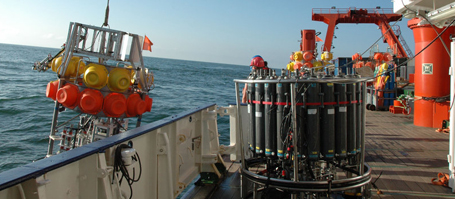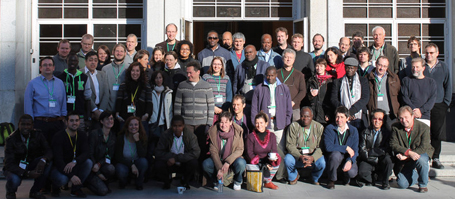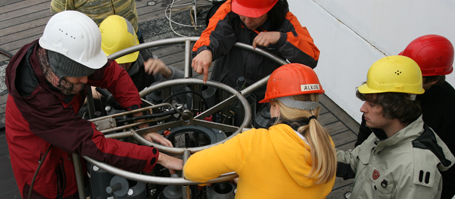The phenomenon is in fact natural. However, the current changes are possibly not. In all tropical oceans, there are zones which have very little or are completely lacking oxygen. Measurements from recent years indicate that these zones are growing. One of the obvious consequences is the shrinking habitat for particular fish species. Yet are these changes part of a natural fluctuation? Or are they a result of the global change caused by humans? And how much further will these zones spread? These are the questions which concern the Collaborative Research Centre (SFB) 754 “Climate - Biogeochemistry Interactions in the Tropical Ocean” at University Kiel and GEOMAR Helmholtz Centre for Ocean Research Kiel, funded by the German Research Foundation. Together with partner projects, four expeditions took place between October 2012 and March 2013 on the research vessel METEOR in the tropical Pacific. Two further expeditions took place on the research vessel MARIA S. MERIAN in the tropical Atlantic. This week 90 scientists of the SFB are meeting in Kiel for a workshop where preliminary results will be exchanged. “All teams were able to gather exciting data from their particular ocean area using very different methods. The analyses are still running, of course; however they show signs that the oxygen minimum zones are continuing to spread,” says Dr. Lothar Stramma, oceanographer at GEOMAR and expedition coordinator of the SFB.
Researchers from very different fields participated in the expeditions, as the processes within and at the rim of the oxygen minimum zones are complex. Nutrients ensure good growth of phytoplankton which produce oxygen through photosynthesis. When the plankton organisms die off, they are decomposed by bacteria that use up oxygen. Some release nitrogen which leaves the ocean as a gas and is thus missing as a nutrient in the water. Moreover all these processes are influenced by water and air temperatures, currents, winds, sunlight, by the composition of species in a certain ocean area, and many other factors. “Therefore we can only understand the development of the oxygen minimum zones if oceanographers, biologists, biogeochemists, marine chemists, physicists and atmospheric researchers work closely together,” explains Dr. Stramma.
The accumulated data helps in understanding the dynamics of the interaction between physical and biological processes in the oxygen minimum zones. “We can also improve the calibration of our computer models to predict future developments,” says SFB spokesman Prof. Andreas Oschlies from GEOMAR. The evaluation of all the expedition data will take months and will probably raise further questions. “There are many details in the oxygen minimum zones that we do not yet understand. Still it is already clear that there are processes in the ocean that one cannot see or feel but that can have a great effect – ultimately on us humans,” emphasizes SFB vice-spokesperson Prof. Ralph Schneider from the Institute of Geosciences at Kiel University.
The scientists are also impatiently awaiting the results of further measuring campaigns. Researchers form Kiel released a nontoxic trace substance off the West African coast in December 2012. Thanks to a specialized instrument, the Ocean Tracer Injection Systems (OTIS), the substance can be released very precisely in specific water layers. “The substance is distributed by the water. When we trace it in future expeditions, we can follow how water masses move in and around the oxygen minimum zone,” explains Prof. Oschlies. The first study of this type is planned for May. “Then we can hopefully add another puzzle piece to the still incomplete overall picture,” says the SFB spokesman.
Contact:
Jan Steffen (GEOMAR, Communication und Media), Tel.: (+49) 431-600 2811
jsteffen@geomar.de
Prof. Andreas Oschlies, (GEOMAR, FB2 – Biogeochemical Modeling)
aoschlies@geomar.de
…



